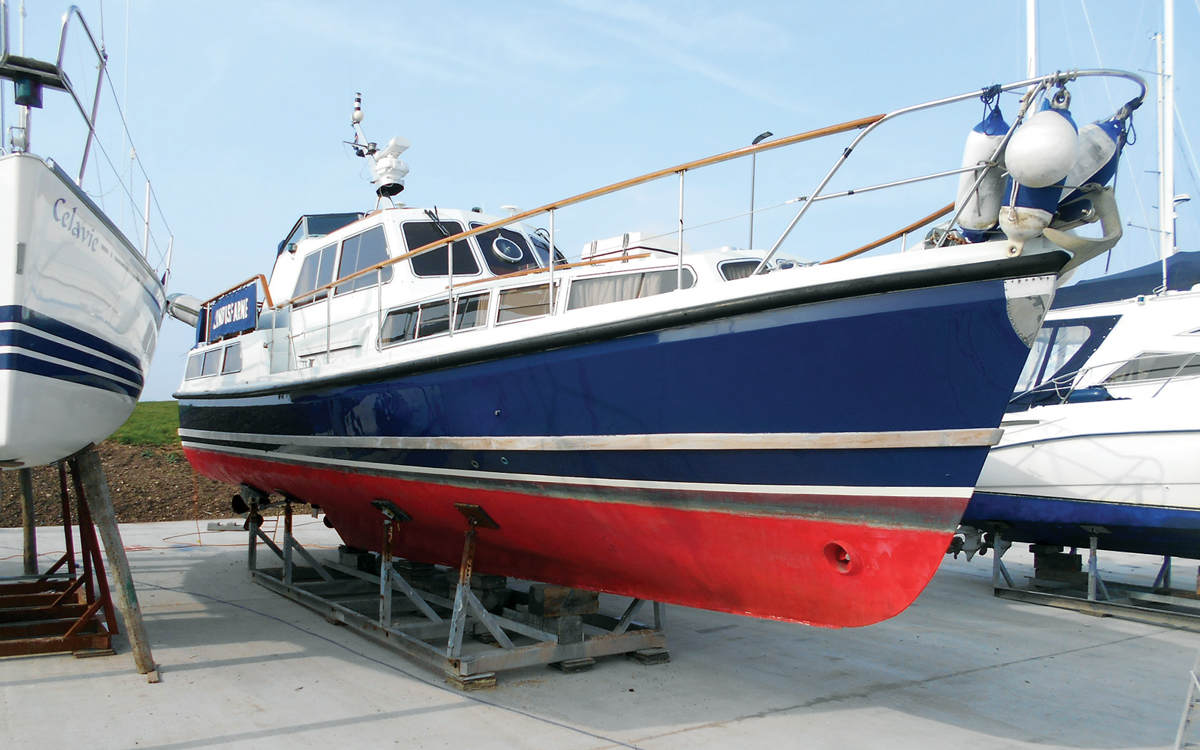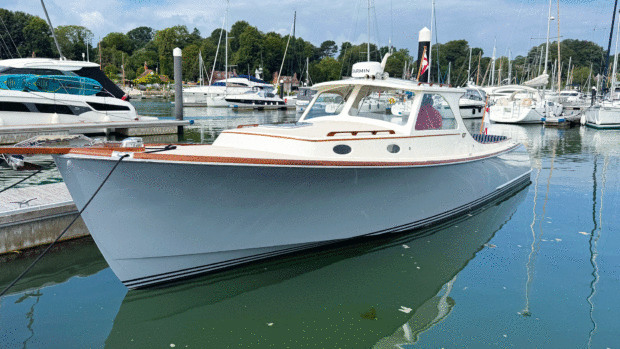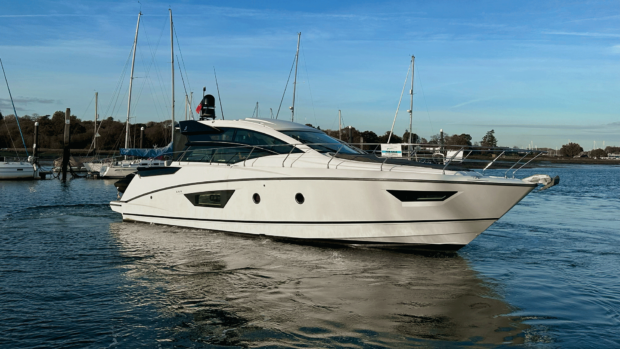British boatbuilding is a time-honoured tradition - we pick out four classic yachts for sale that show off what our island has to offer
Have you noticed how some nations seem to have certain things that they’re particularly good at building – almost as though it’s hardwired into the population’s DNA?
Take Switzerland. Not only is it the country of origin for Rolex, probably the most famous watch brand in the world, but also Omega, Breitling, Patek Philipe, Tag Heuer and many other highly regarded watch brands.
The Japanese – they know how to put a motorcycle together. Honda, Kawasaki, Suzuki, Yamaha, who else in the world has a bike line-up like that?
The Germans, of course, do cars – indeed they pretty much invented them. Mercedes-Benz, Porsche, BMW, Audi, VW and they own Lamborghini, Rolls-Royce and Bentley these days!
So what of the British? Well, we build boats, and we build them well. Sunseeker, Princess, Fairline, Seaward – all world renowned British yards still going great guns today. Even our back catalogue is unimpeachable – Broom, Fletcher, Fairey, Powles – gone but never forgotten. So to celebrate, here are four older thoroughbred craft that hail from our sceptred isle.
Broom Ocean 37
Built: 1975
Price: £31,995
Based on the Norfolk Broads, Broom dates back to the early 1900s. In the late 1960s the company started experimenting with GRP, and the first boat designed to be built in GRP was a 37-footer from the pen of John Bennett.
The Broom 37 Continental launched in 1968, segueing into the 37 Crown in 1978. The Ocean 37 version launched in 1969 under the Aquafibre banner (a joint venture GRP moulding centre operated by several Broads builders until it was bought by Broom).
Interior
The aft cabin layout of the Ocean 37 means the accommodation runs the full length of the vessel. It sleeps six in two separate cabins (one each end of the boat) plus a converting saloon. Interestingly, the galley is tucked behind the aft port corner of the saloon one step down, keeping it separate but linked. A lower helm offers comfortable all-weather boating.
Exterior
The big difference between the Ocean 37 and the superficially similar Continental 37 is the continuation of the low side decks around and behind the aft cabin, making this an easy boat to work (on the Continental, the raised aft deck is full beam). A low floor in the saloon keeps the roof height down, allowing the exterior helm to go on the aft deck rather than needing a flybridge, reducing air draught for inland cruising.
Performance
Broom fitted twin Perkins HT 6.354 shaft drive engines rated from 115hp-185hp each, specifically chosen for their low height in order to make that low saloon floor possible (in fact the Ocean 37 ceased in 1984 as a result of Perkins dropping this particular unit).
The largest engines would push the boats to 20 knots but were less suitable for low speed inland running. As a result, the vast majority got the 145hp variants fitted to this boat, which give about 15 knots flat out.
Seakeeping
Something of a hybrid design, the Ocean 37 (as the name suggests) was designed to venture offshore as well as ditch crawl. So the hull has a three-quarter-length keel but also runs nicely offshore, albeit with quite a wet ride when pushing into choppy conditions.
Specification
LOA: 37ft 0in (11.3m)
Beam: 12ft 4in (3.8m)
Draught: 3ft 0in (0.9m)
Displacement: 8 tonnes
Fuel capacity: 757 litres
Engines: Twin Perkins HT6.354 diesel
Lying: River Thames
Contact: Boat Showrooms
Article continues below…

Secondhand boat buyers guide: Four of the best used British yachts

Secondhand buyers guide: Best classic boats
Fairey Fantôme
Built: 1973
Price: £65,000
“Fantôme is the latest version of the famous Huntsman 31 with similar fine entry and flared bows based on race design practice,” says the much-thumbed Observer’s Book of Small Craft that has been in my possession since the age of 8.
What it fails to mention is the boat’s stand out feature – launched in 1972 this Fairey is made of GRP rather than the usual hot-moulded wooden construction. Named after a prototype of a British fighter aircraft that Fairey designed in the 1930s, this is as close as you’ll get to a practical, affordable Fairey cruiser. Which makes it a great shame that the company only ever built eight of them.
Interior
Built at a time when boats were designed from the outside in (the reverse of current trends), space inside the Fantôme is adequate rather than plentiful, with a converting dinette at the front of the cabin and a heads opposite the small L-shaped galley.
Back aft, a separate cabin offers a pair of single beds. This example is especially nice, having been refitted in 2005 by the then commodore of the Fairey Owner’s Club, who owned it at the time.
Exterior
With a cabin at either end, there isn’t a lot of room left for the centre cockpit but it is safe and well protected with generous side decks for going forward.
Performance
Twin Ford Mermaid 180hp engines were standard originally but this boat was re-engined in 2005 with a pair of Perkins Sabre M300TI 260hp. These give up to 30 knots.
Seakeeping
“She handled immaculately in the rough stuff, and the Whitlock rod steering was a joy. As a vehicle for rapid open water crossings she would be very hard to beat”, said MBY when we got behind the wheel in 1973, although we did rather scathingly refer to it as “far from being a genuine all weather cruising boat for there is no protection for the helmsman.” Weren’t people supposed to be made of sterner stuff in the olden days?
Specification
LOA: 32ft 3in (9.8m)
Beam: 9ft 9in (3.0m)
Draught: 2ft 10in (0.9m)
Displacement: 6.5 tonnes
Fuel capacity: 416 litres
Engines: Twin Perkins Sabre M300TI 260hp diesel
Lying: Beaulieu
Contact: Bucklers Hard Yacht Brokers
Fleur de Lys 52
Built: 1966
Price: £63,000
Civil engineer J.E. Dagless was a keen motor cruising man who, in the late 1950s, felt that there was a gap in the market for a seaworthy 50ft cruiser. He also felt that traditional boat yards of the time were inefficient and that series production would allow him to build high-quality boats more cost-effectively.
So in 1958 he hired East Coast naval architect J. Francis Jones as a design consultant and set to work building himself a boat. It was well received, including a favourable review by MBY in 1959, so he started production of Fleur De Lys cruisers, naming them after a town in France he’d visited. The first was a 52, but he created a range up to 95ft, building them eight at a time in a modern factory in Cambridgeshire.
Interior
Drop down from the raised wheelhouse and you’ll find a comfortable lounge. Head down again for a large dinette, galley, heads and forward cabin with twin bunks. Back aft is a third cabin with bunk beds and the master cabin, modified from the original twin singles either side to a single and a double (part of an extensive refit). There’s even a bathroom back here with a proper bath in it!
Exterior
Sweeping teak decks, teak-capped rails and fabulous wooden skylights waft you straight back to a different era. The spacious aft deck is a genuine delight with a hard top from which canopies can be hung for all-year-round boating.
Performance
Twin Perkins 6354 diesels give a steady 8 knot cruise; 10 knots flat out, which is entirely in keeping for a gentleman’s motor yacht. Leave racing about to the riff raff.
Seakeeping
It’s a 40-tonne boat, so progress should be statesman-like, and without too much unseemly rolling, thanks to the Vosper Mini Fin hydraulic stabilisers. Plenty of planning is needed for berthing given the sheer momentum. Powering into a berth and then dialling up a fistful of astern is likely to end in tears, so take it slowly and practise carefully.
Specifications
LOA: 52ft 6in (16.0m)
Beam: 15ft 6in (4.7m)
Draught: 5ft 6in (1.7m)
Displacement: 40 tonnes
Fuel capacity: 2,000 litres
Engines: Perkins 6354 120hp diesels
Lying: Cowes
Contact: Wooden Ships
Nelson 42
Built: 1979
Price: £94,850
Nelson can date its roots right back to 1864 when Sir John Thornycroft built his first steam launch on the River Thames. Two years later his father bought riverside ground and John I Thornycroft and Company was born. He made a name for himself in fast launches and built the first torpedo boat for the Royal Navy.
By the time the yard moved to Southampton in 1904 it was known worldwide for its fast naval craft. It was his grandson, Peter Thornycroft, who started Keith, Nelson & Company Ltd in the 1950s and TT Boat designs in the 1960s.
The first Nelson as we know it was a wooden 29-footer built for Leopold de Rothschild in 1959 so that he could commute between his home on the Beaulieu river and the Royal Yacht Squadron at Cowes. The legend was born.
Interior
It’s interesting that all of these British thoroughbreds have aft cabin configurations. In this case an ensuite cabin with two single berths. Ahead of the wheelhouse, steps drop down to a dinette (convertible to a double berth) opposite the galley and heads, and vee berths in the fore cabin, which also convert to a double.
Exterior
A boat that you are on, rather than in, when outside and a very easy one to move around. The flat deck over the aft cabin features an external helm position, steps either side drop down to low wide side decks that make mooring a cinch.
Performance
Re-engined in 2016 with a pair of Beta 220hp turbo diesels, she’ll push on to 20 knots or more, with a fast cruise speed in the high teens.
Seakeeping
Seakeeping is what it’s all about for this boat, with a semi displacement heavy weather hull moulded by Halmatic. It’s a tried and tested formula beloved of pilots, coastguards and anyone else who needs to go to sea and cover ground fast, irrespective of conditions. A deep keel provides peerless directional stability as well as protecting the sterngear should the boat touch bottom.
Specification
LOA: 41ft 0in (12.5m)
Beam: 12ft 0in (3.7m)
Draught: 3ft 3in (1.0m)
Displacement: 11 tonnes
Fuel capacity: 1,363 litres
Engines: Twin Beta 220hp diesel
Lying: Hamble
Contact: James Dickens Marine






















